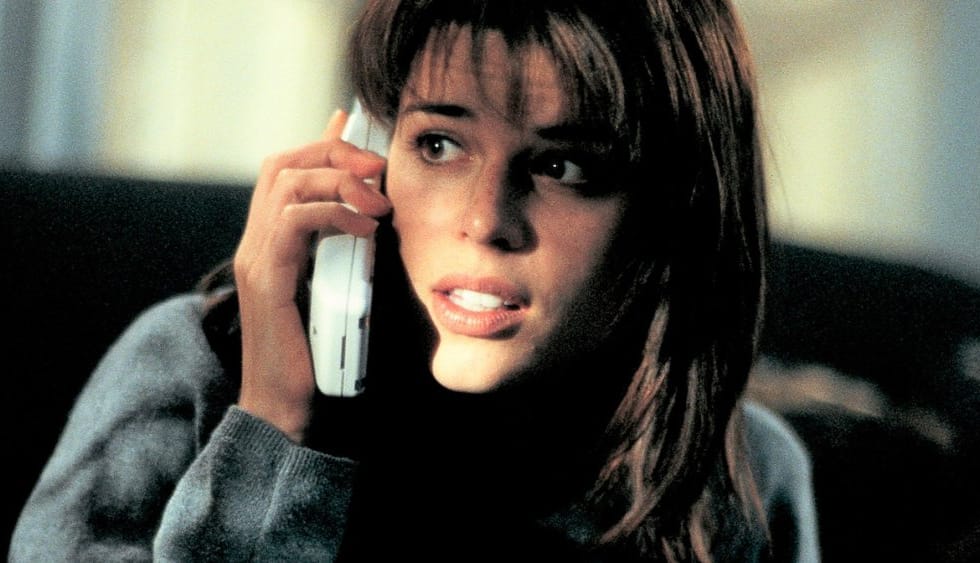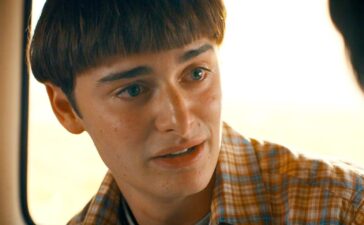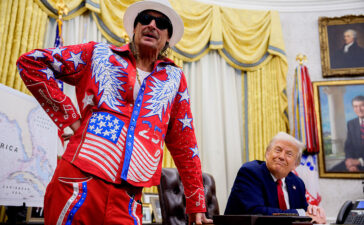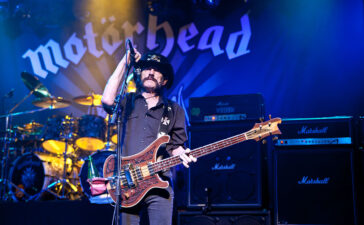“What’s your favourite scary movie?” With one line, horror maestro Wes Craven introduced fans to masked killer Ghostface and reinvented the slasher film for a whole new audience.
There are few horror directors as revered as Wes Craven. Christened the ‘Master of Horror,’ Craven is responsible for pioneering the genre with classic flicks from revenge thriller The Last House On The Left to The Hills Have Eyes and A Nightmare On Elm Street. His résumé is unquestionable, but as the ’90s hit, Craven’s Midas touch was wavering after a string of flops. Disillusioned with the genre he helped create and wanting to try something different, Craven almost gave up on horror until the script for Scary Movie (eventually renamed Scream) landed on his desk.
Written by first-time screenwriter Kevin Williamson, Scream was a fresh and bloody take on the horror genre exploiting everything we knew about classic horror flicks. Initially keen, Craven ended up passing on Scream when offered the opportunity to direct the remake of The Haunting. His interest in the project resurfaced when he discovered that Drew Barrymore had signed on. At that time most horror flicks cast B grade or unknown actors, so to have someone of Barrymore’s calibre added a splash of Hollywood glamour and meant the studio were invested. When The Haunting fell through, Craven convinced the Scream producers to give him the job. It turned out an inspired choice, as Scream went on to become a box office smash and the most successful film of Craven’s distinguished career.
“Hello, Sidney”
Scream works thanks to Williamson’s inventive script influenced by a series of murders carried out by the Gainesville Ripper. His core idea revolved around a woman who is home alone and tormented by a masked killer. This ended up being the famous opening scene of Scream, with the rest of the film focusing on high schooler Sidney Prescott (Neve Campbell). Dealing with the first anniversary of her mother’s murder, Prescott finds herself the target of the masked killer known as Ghostface. Unlike the silent Michael Myers or brooding Jason Voorhees, Williamson injected the wisecracking Ghostface with personality, giving him a human side and making him more believable. Instead of just stalking his victims, Ghostface would talk to them on the phone about their scary movies before gutting them, adding a sense of realism to what was happening on the screen. As the bodies piled up and Ghostface made things personal, Prescott was aided by TV journalist Gale Weathers (Courtney Cox), Deputy Dewey (David Arquette) and close friend Randy Meeks (Jamie Kennedy) as she’s forced to rely on her wits and knowledge of horror conventions to outwit the killer and survive the film’s shocking climax.
Horror Survival Guide 101
What set Scream apart from every other mundane horror released at the time was Williamson’s playful script that blatantly encompassed well-known horror tropes. Early films of the genre from the ’70s and ’80s laid the blueprint for horror films concerning groups of kids being picked off one by one by some kind of crazed, unstoppable murderer. The characters in these movies were often rebellious teens, seen drinking, smoking weed and fornicating before being hunted down and killed in brutal ways. Williamson went against the grain by using these well-known horror clichés as the rules for how to survive a killer, using video store clerk and horror aficionado Meeks as the conduit for these statements.
Meeks explains outwardly that the characters in the film must abstain from sex, drugs and alcohol. They must never say: “I’ll be right back.” Those who do always get killed on the silver screen. Breaking these rules inevitably leads to a gruesome death, something that befalls several characters who refused to follow Meeks’ advice. These rules are expanded on in the later films, but when first presented to horror fans in Scream, there was a clear wink at the camera from all involved. Scream also revels in the horror genre, making reference to a dozen famous horror films and including many in-jokes, such as the janitor (played by Craven), a nod to the iconic Freddy Kruger and a scene of Barrymore’s character being chased by the killer shot similar to a famous scene in The Texas Chainsaw Massacre. These nods to the genre, combined with Williamson’s smart writing, created an entirely new type of slasher film that would dominate the genre of the next decade. Scream’s self-awareness allowed audiences to laugh at typical horror tropes and gave fans a new feminist hero in the form of Sidney Prescott.
The Final Girl Reimagined
Coined by professor and writer Carol J Clover, the expression “Final Girl” is used to describe the last woman left alive in a horror film that has survived by following the horror rules outlined in Scream. Unlike the majority of similar films where the damsel in distress is often a passive, timid female who manages to survive due to sheer luck rather than her smarts, Scream positioned Prescott as a kick ass, inherently confident woman who flexed her wits to take on Ghostface. This was a huge change from most slashers and gave fans a new heroine to root for.
Many declared Prescott a feminist icon, with Kathleen Rowe Karlyn’s gender study, Scream, Popular Culture And Feminism’s Third Wave: “I’m Not My Mother” asserting, “In Sidney, the trilogy provides a new model of femininity for Third Wave audiences; a girl who is active, who can protect herself through physical resources, who can claim power over her own sexuality, and express rather than repress her rage. This new girl hero knows her culture, form the legends underpinning its institutions to the popular culture and technology of her own generation, using the tools it offers as a means of rewriting old narratives that no longer serve her.” In layman’s terms, Scream takes the conventions of the girl in peril, gives a sly nod to the camera and turns audiences expectation’s upside down, transforming Sidney Prescott into our first empowered “Final Girl.”
Lasting Legacy
Despite a moderate budget of $15 million, Scream went on to become a box office smash when it hit theatres during the summer of 1996. While producers were worried after it made a paltry $6 million during its opening weekend, they needn’t have – it went on to gross a massive $173 million worldwide. Scream re-invigorated horror films – at that time on the decline – by taking the piss out of the genre with witty jokes and smart writing and casting a bunch of Hollywood up and comers who would go on to be stars. It also triggered a slew of similar meta-horror films that dominated the next decade, including hits I Know What You Did Last Summer, Final Destination and Urban Legend.
Not only did the film inspire similar slashers, but also spawned three sequels and a television show. It’s also set to return in 2022, with Scream 5 reuniting writer Williamson with actors Campbell, Cox and Arquette along with a whole new cast of characters for Ghostface to play with. While the jury is out on whether another instalment can live up to what the series has already produced, there’s no doubt that the original had a profound impact on the horror genre and paved the way for the modern slasher.







